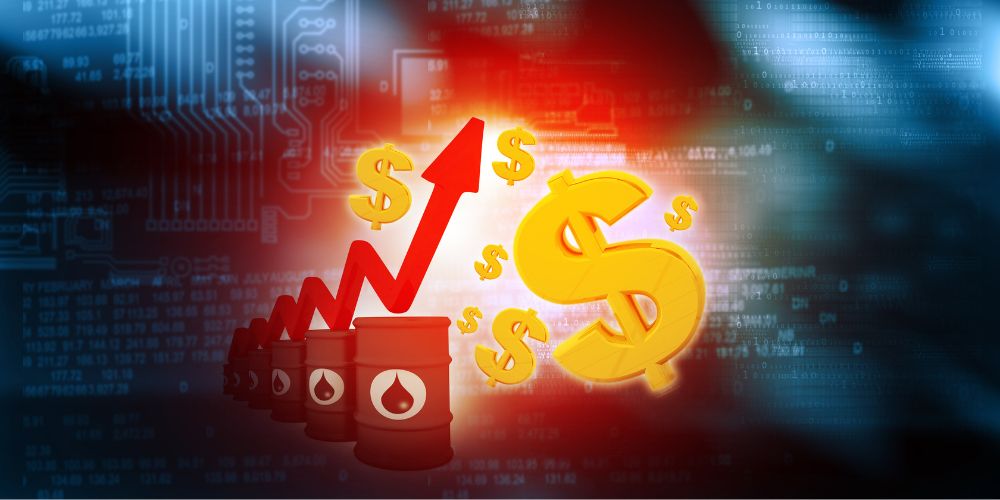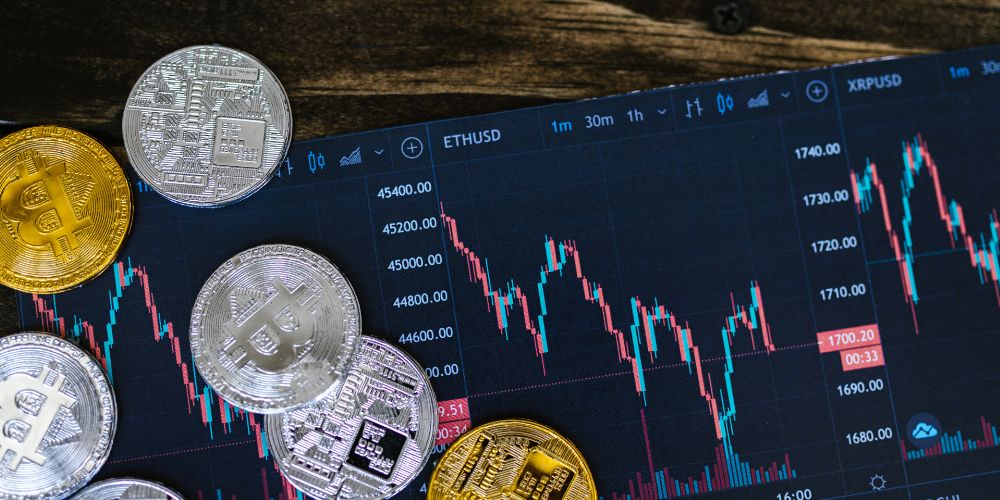Predicting crypto prices is one of the most challenging yet essential tasks for any cryptocurrency investor. The volatile nature of crypto markets can make price prediction seem overwhelming, especially for beginners. However, with the right strategies, you can gain insights into market movements and make informed decisions.
In this article, we’ll explore five proven strategies to help you predict crypto prices effectively. These methods will introduce you to key tools and market indicators used by seasoned traders and analysts.
Understanding the Basics of Cryptocurrency Price Predictions
What Drives Crypto Prices?
Crypto prices are influenced by several factors, ranging from market sentiment to macroeconomic events. Some of the main drivers include:
- Market Demand and Supply: Like any asset, cryptocurrency prices are driven by the basic economic principle of supply and demand. If more people want to buy a crypto than sell it, the price rises, and vice versa.
- Market Sentiment: News, social media, and public perception can influence crypto prices. Positive crypto news, such as institutional adoption, often drives prices up, while negative news, like regulatory crackdowns, may cause a decline.
- Adoption and Use Cases: The more a cryptocurrency is used for real-world applications, the higher its value. For example, as Ethereum’s use in decentralized finance (DeFi) grows, so does its price.
- Crypto Market Cap: The market cap reflects the total value of a cryptocurrency and is calculated by multiplying the current price by the circulating supply. Cryptocurrencies with large market caps, like Bitcoin and Ethereum, tend to be more stable than smaller, lesser-known coins.

Understanding these key factors will help you form a foundation for predicting crypto prices.
5 Strategies for Predicting Crypto Prices
1. Technical Analysis (TA)
Technical analysis is one of the most commonly used methods for predicting crypto prices. It involves analyzing historical price charts and patterns to identify trends and potential price movements.
- Key Tools in Technical Analysis:
- Candlestick Patterns: Candlestick charts show price movements over a specific period. Common patterns like the “doji” or “hammer” can indicate reversals or continuations in the market.
- Moving Averages (MA): Moving averages smooth out price data, making it easier to identify the direction of the trend. Popular MAs include the 50-day and 200-day moving averages.
- Relative Strength Index (RSI): RSI measures whether a cryptocurrency is overbought or oversold. A reading above 70 suggests overbought conditions, while below 30 indicates oversold conditions.
- Support and Resistance Levels: Support levels are where the price tends to stop falling, while resistance levels are where the price tends to stop rising.
Example: If Bitcoin’s price repeatedly bounces off a certain level of support, this could indicate a strong buying zone.
What to Watch: Stay updated with crypto news, as sudden developments can affect price trends even when technical indicators suggest otherwise.
2. Fundamental Analysis (FA)
Fundamental analysis concerns the intrinsic value of the cryptocurrency. That is, it calculates the factors encompassing the project’s team, technology, use cases, and market potential.
- Key Elements in Fundamental Analysis:
- Project Whitepapers: Review the whitepaper to understand the project’s goals and use cases. Does the cryptocurrency solve a real-world problem?
- Team and Partnerships: The strength and experience of the project’s team can influence its success. Partnerships with established companies can also boost the value of a cryptocurrency.
- Adoption Rates: A growing number of users or applications that adopt the cryptocurrency can lead to increased demand and higher prices.
- Market Cap: Consider the crypto market cap. High market cap cryptos tend to be more stable, while smaller ones might offer higher growth potential but with increased risk.
Example: Ethereum’s switch from Proof of Work (PoW) to Proof of Stake (PoS) through the Ethereum 2.0 upgrade is a fundamental factor that positively impacted its price.
What to Watch: Keep an eye on crypto news related to upcoming upgrades, partnerships, or major project milestones.

3. Sentiment Analysis
Sentiment analysis involves gauging the overall mood of the crypto market. Positive sentiment generally leads to higher crypto prices, while negative sentiment can lead to a decline.
- Tools for Sentiment Analysis:
- Social Media Monitoring: Platforms like Twitter and Reddit can provide insights into the public perception of a cryptocurrency. Look for trending hashtags, mentions, and discussions about specific cryptocurrencies.
- Crypto News Websites: Stay informed by following major crypto news outlets. News about regulations, technological advancements, or market movements can influence sentiment and, ultimately, crypto prices.
- Fear and Greed Index: This index measures the emotions driving the market. High levels of fear often indicate a buying opportunity, while extreme greed may signal that the market is overbought.
Example: In 2021, a series of positive tweets by Elon Musk about Dogecoin significantly boosted its price, showcasing the power of sentiment in the crypto market.
What to Watch: Always cross-reference social media sentiment with actual crypto news to avoid acting on hype alone.
4. On-Chain Analysis
This blockchain data analyzes crypto prices using price predictions in on-chain analysis. On-chain analysis, through this method, is mainly conducted for data analysis of transactions, activities in the wallet, and network health, which gives an insight into the types of price movements likely to be expected in the market.
- Key Metrics in On-Chain Analysis:
- Active Addresses: A rising number of active addresses often indicates growing interest and usage, which could lead to higher prices.
- Transaction Volume: High transaction volumes suggest strong market participation, which can push prices higher.
- Whale Activity: Monitoring the movements of large holders, or “whales,” can provide clues about potential market moves. For example, if whales are selling large amounts of a cryptocurrency, it could indicate a potential price drop.
- Network Hash Rate: For Proof of Work cryptocurrencies like Bitcoin, a high hash rate suggests network security and miner confidence, which can positively impact prices.
Example: In late 2020, an increase in Bitcoin’s hash rate coincided with a massive bull run, signaling strong network security and rising prices.
What to Watch: Use blockchain explorers to track real-time on-chain data. Combine this information with crypto news to get a full picture of potential market movements.

5. News and Events Analysis
One of the simplest yet effective strategies for predicting crypto prices is staying up to date with the latest crypto news and events. Cryptocurrency markets are highly reactive to news, both positive and negative.
- Key News Sources:
- Regulatory Developments: News about new regulations or government policies can significantly impact crypto prices. For instance, a country banning cryptocurrency could lead to a sharp price drop, while favorable regulations may boost prices.
- Technological Upgrades: Crypto prices often rise ahead of major upgrades or forks. For example, Bitcoin halving events have historically led to price increases.
- Institutional Adoption: News about large companies or financial institutions adopting cryptocurrency can lead to price surges. For example, when Tesla announced it would accept Bitcoin as payment, the price of Bitcoin surged.
Example: In 2021, Bitcoin’s price soared after news of El Salvador adopting Bitcoin as legal tender, showcasing the impact of major crypto news on prices.
What to Watch: Keep an eye on crypto news related to regulation, adoption, and technological advancements, as these events often cause significant price movements.

Tips for Beginners to Improve Crypto Price Predictions
Stay Informed with Crypto News
Crypto prices remain extremely sensitive to news and developments, so be sure to set up alerts for leading crypto news sites as well as key figures in the cryptocurrency ecosystem. Being in the know will allow you to respond fast to market-moving news.
Diversify Your Data Sources
Don’t rely on a single strategy or data source. Use a combination of technical analysis, fundamental analysis, sentiment analysis, on-chain metrics, and crypto news to build a comprehensive view of the market.
Practice with Small Investments
If you’re new to predicting crypto prices, it’s wise to start small. Practice with a small portion of your portfolio until you’re confident in your ability to interpret the market.
Stay Objective
Avoid making decisions based on emotions. Crypto markets can be extremely volatile, and emotional decisions often lead to losses. Stick to your strategy and rely on data.

Conclusion
It is a very intimidating task-even to someone who is new. However, you are going to predict better cryptocurrencies with the combination of technical as well as fundamental analysis, sentiment analysis, on-chain data, and keeping updated with crypto news. The cryptocurrency market is constantly emerging, so keeping updated with the latest news is important, and one should never stop learning.
By mastering these strategies, you’ll be well on your way to making informed decisions and navigating the complexities of the crypto market with confidence.
At TKCreationz, we not only craft cutting-edge web designs but also keep you updated with the latest cryptocurrency trends and news, helping you stay ahead in the ever-evolving digital economy.



















